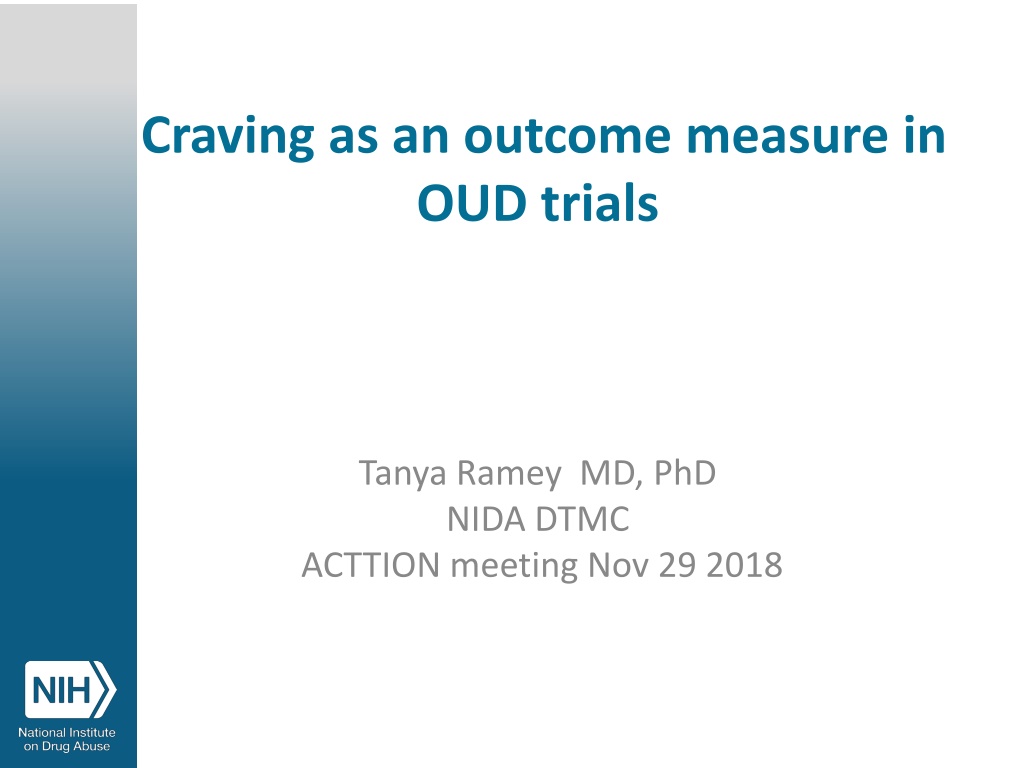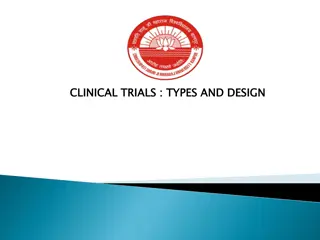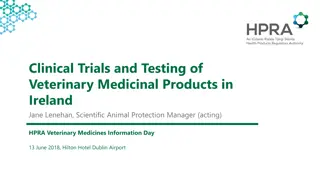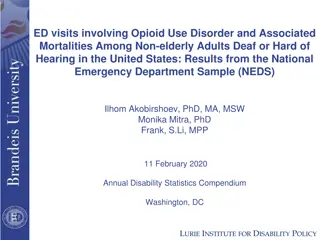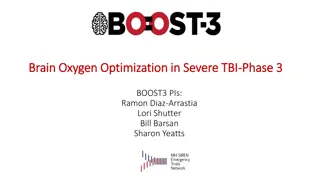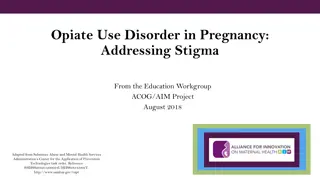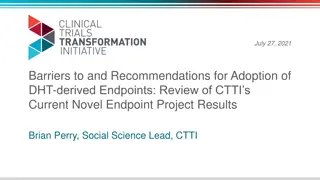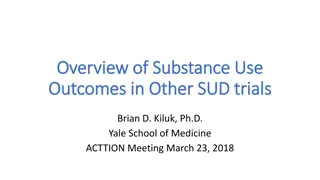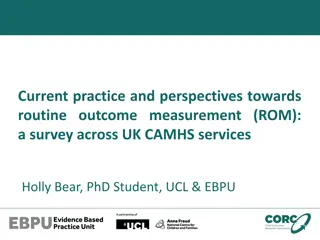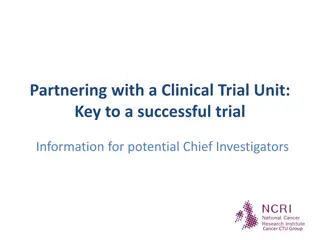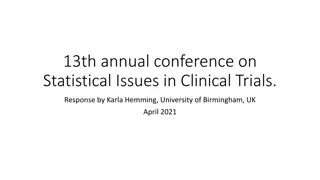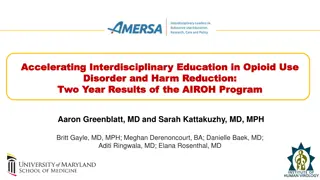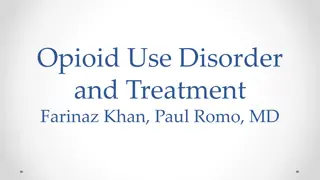Understanding Craving as an Outcome Measure in OUD Trials
Craving plays a vital role in substance use disorder (SUD) diagnosis, with intense desires or urges triggered by environmental cues. The focus is on identifying and validating the best craving measure for OUD clinical trials. Near-term goals include qualifying craving as a Clinical Outcome Assessment (COA) for regulatory acceptance. Long-term goals aim to link craving measures with biological markers and clinical outcomes for efficient drug evaluation. Clinical Endpoint assessments encompass a range of symptoms, behaviors, and brain functions related to addiction.
Uploaded on Sep 27, 2024 | 0 Views
Download Presentation

Please find below an Image/Link to download the presentation.
The content on the website is provided AS IS for your information and personal use only. It may not be sold, licensed, or shared on other websites without obtaining consent from the author. Download presentation by click this link. If you encounter any issues during the download, it is possible that the publisher has removed the file from their server.
E N D
Presentation Transcript
Craving as an outcome measure in OUD trials Tanya Ramey MD, PhD NIDA DTMC ACTTION meeting Nov 29 2018
Craving in SUD diagnosis Craving - a key symptom, added into DSM-5 (Criterion 4)- an intense desire or urge for the drug that may occur at any time but is more likely when in environment where the drug previously was obtained or used. Pathophysiology of craving long term present neuroplacticity signature,and not only in SUDs...
Near-term Goals -Available craving measures/scales currently used in OUD clinical trials reviewed today. -Best measure to be identified and validated. -Craving Clinical Outcome Assessment (COA) for OUD should go through the qualification process for Drug Development Tool (DDT). This step is needed for: the FDA regulatory acceptability as an endpoint. Label claim? Indication?
Biomarkers Animal Models Clinical Outcome Assessments (COA) Craving 4
What is Clinical Outcome Assessment? A measure that produces a score Has clearly defined methods and instruction for administration Has clearly defined methods for assessing responses A standard format for data collection Well-documented methods of scoring, analysis, interpretation of results in targeted patient population
Long term Goals Strive to link Craving COA measure To proximal biological markers, e.g., neurocircuitry To more distal clinical outcomes along the line of how patient feels, functions or survives Use Craving as an intermediate phenotype of incentive salience with the brain function measures biomarkers & behavioral task(s) for efficient go/no- go decisions in drug candidates early clinical evaluation
Clinical Endpoints Endpoints Symptoms State - Trait COAs clinical scales, eg craving COA Behavioral tasks Human lab measures Brain Circuit malfunction Addictions RDoC RDoC Brain functions measures fMRI, EEG, MEG,
Addictions RDoC & Craving as an intermediate phenotype Craving, increased attention to drug related cues (Kwako et al.,2018)
Clinical Outcome Assessments (COA) Types craving Clinician Reported Outcome (ClinRO) Patient Reported Outcome (PRO) Excludes Biomarkers Observer Reported Outcome (ObsRO) Performance Outcome(PerfO)
12 12
